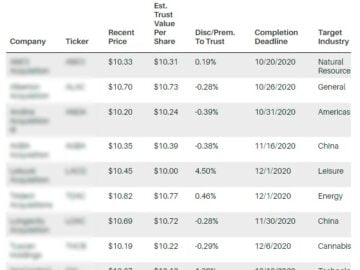Seeking out great stocks to buy is essential, but many would say it’s even more important to know which stocks to steer clear of. A losing stock can eat away at your precious long-term returns. So, figuring out which stocks to trim or get rid of is essential for proper portfolio maintenance.
Even the best gardens need pruning, and our team has spotted a few stocks that seem like prime candidates for selling or avoiding. Continue reading to find out which three stocks our team is staying away from this week.
Fintech company Upstart Holdings (UPST) management lowered its full-year guidance last week when it posted disappointing preliminary second-quarter results, sparking yet another sell-off for the stock. UPST’s share price is down more than 90% from its October ATH, and it may have more to go as bank partners tighten their fists.
Institutional lenders are less willing to fund Upstart’s loans than ever, and it makes sense for backers to be cautious in the current macroeconomic environment. Rising interest rates will continue to pressure consumers, leading to more defaults. Upstart is especially vulnerable as its AI models have yet to be tested during a significant down period in the credit cycle.
In the preliminary Q2 report, management cited another reason for the lower outlook. Upstart more than doubled the amount in loans it funded with its own cash in just a single quarter. At the end of Q1, the company held $600 million in loans on its own balance sheet, up from $250 million in the previous quarter, severely exposing its balance sheet to credit risk at what could be the worst possible time.
Previously, Q2 guidance called for $300 million in revenue and a net loss of $2 million. The company now estimates $228 million in revenue and a net loss of $29 million. That implies revenue growth of roughly 18%, representing a sharp deceleration from the quadruple-digit revenue growth UPST delivered in Q1 2021. With growth momentum slowing while competition in the space is simultaneously growing, UPST is one stock to stay away from for now.
There’s no question that electric vehicles are the future, but investors looking for bargains amid the market meltdown would be wise to steer clear of third-party companies specializing in EV charging stations like Blink Charging (BLNK). It’s much too soon to predict winners in this cutthroat niche of the EV industry mainly because it’s unclear whether third-party charging kiosks will ever be profitable.
Analysts don’t see Blink becoming profitable before 2026. The company will likely look at a much different landscape by then. A lot can change in three and a half years. From the current vantage point, the near future looks murky for the entire EV industry. Earlier this month, Elon Musk announced that Tesla, the largest EV maker, would be laying off 10% of its workforce amid supply chain pressure and limited production at its Shanghai factory.
Blink Charging shares have fallen 70% since peaking in early 2021 and are 41% lower year-to-date, but the stock is still trading at 28.5 times, trailing twelve-month revenue. For perspective, the price-to-sales ratio for the S&P 500 index as of June 1 was roughly 3. And this was also way higher than what the balance has been historically. The current consensus is to Hold Blink stock. We’ll stick to the sidelines on third-party EV charging companies until industry headwinds subside.
Inflation is taking a heavy toll on input costs for digital printing company Xerox (XRX), all while supply-chain disruptions are impeding the company’s ability to manufacture higher-margin products. XRX has lost nearly 40% of its value since the beginning of the year. Anyone looking for a reason to buy on the dip of this long-time laggard would be hard pressed to find one.
Xerox stock has carried a consensus Sell recommendation for more than a year. It’s not hard to see why zooming out on XRX’s chart. The stock has underperformed the broader market by drastic margins in five of the past seven years. According to the pros, there’s little reason to see it snapping the losing streak anytime soon.
“Prior to the pandemic, Xerox had faced pressure from the rise of the paperless workplace and the corresponding decline in imaging equipment revenue,” writes Argus Research analyst Kristina Ruggeri (Hold). “The increase in work-from-home practices during the pandemic further accelerated this trend.”
XRX share price is down 36% year to date. We’ll be sticking to the sidelines for the foreseeable future.













